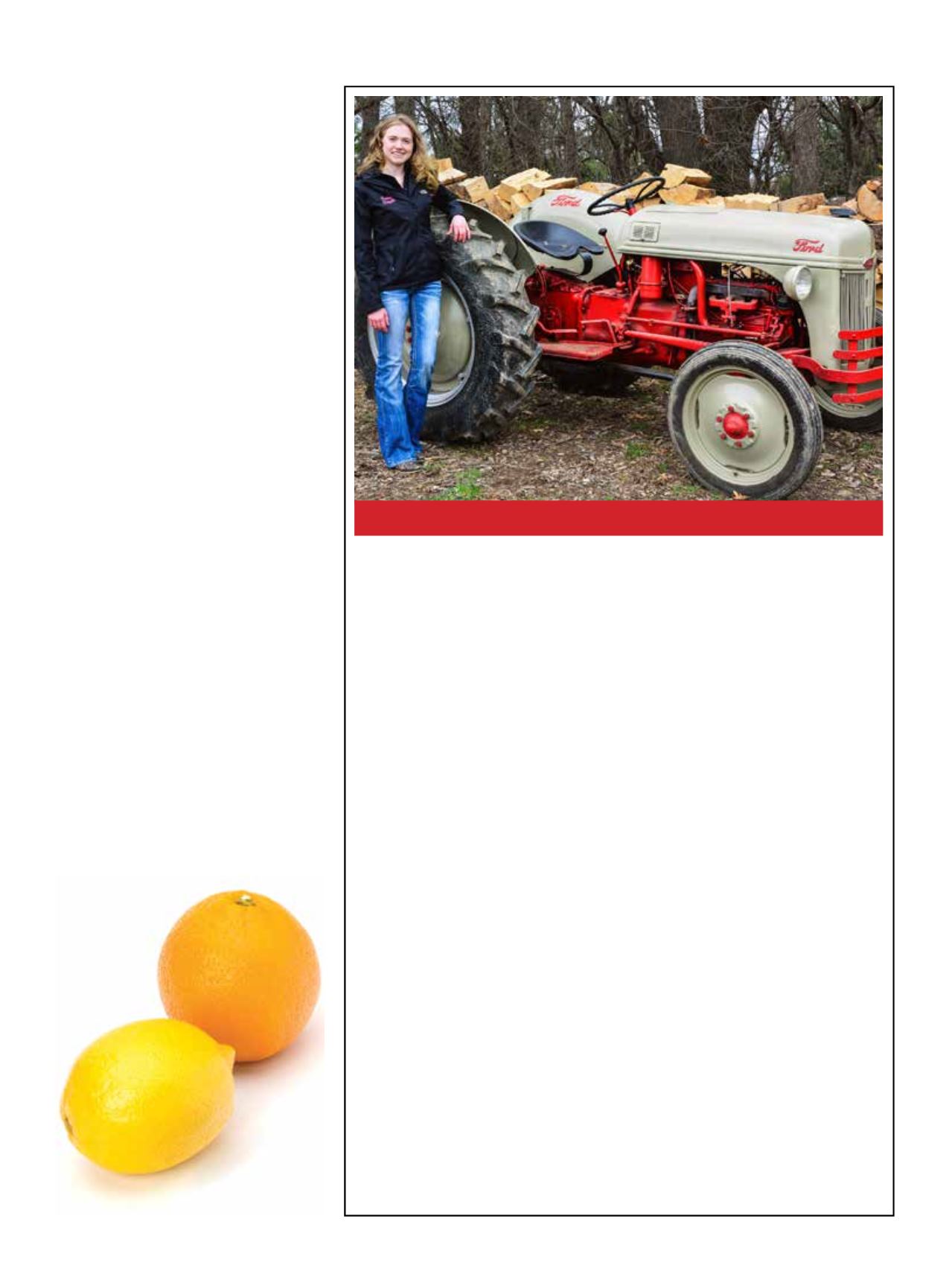

Better Farming
February 2017
Story Idea?
93
RURAL
ROOTS
Built from 1948 to 1952, the Ford
8N is one of North America’s most
loved tractors. More than 500,000
were manufactured and many are
still in use today. (Many of the 8N’s
close cousins, including the Ford
9N and the 2N, are also in use.)
The Ford 8N is a lower horse-
power tractor. There’s no power
steering. The hydraulics and PTO
are not live.
It’s a simple, basic tractor
without many of the modern
conveniences you’d get in a new
tractor today. What you do get in
the 8N is rugged reliability.
There are plenty of small chores
around the farm for which the Ford
8N is perfect. The three-point hitch
makes it a versatile tool.
I use one frequently for blading
the driveway, brush hogging, and
pulling a wagon to and from the
woodpile.
The Ford 8N is the standard of
reliability, built to last for generations.
While these tractors require
occasional maintenance, there are
no significant design flaws.
The 8N is easy to work on. It’s
an excellent first tractor for a
budding mechanic, with a straight-
forward design and easy-to-find
parts.
The laws of supply and demand
really work for you with an 8N
tractor. With so many of these
machines still in use, the price and
availability of parts can’t be beat.
You can have a lot of fun with a
Ford 8N, too! My dad and I
worked together one year to put a
flathead V8 in a Ford 8N. We
liberated the perfect 4.3 Chevy
engine from an old Astro van that
we found at my uncle’s salvage
yard. While an Astro isn’t exactly
the most impressive of vehicles, the
engine got a whole new lease on
life inside that tractor!
If you are looking for an
inexpensive, rugged, reliable
tractor for basic chores, the Ford
8N can’t be beat.
BF
Rachel Gingell works alongside
her father, repairing and re-selling
tractors.
Enjoying tropical
fruits in the early
20th century
by ANDREA M. GAL
In February 1913, Mabel Brown, who
farmed 100 acres in Carleton County,
“had oranges for tea” when company
visited.
And Brown was not the only one
serving this type of treat. While many
of us may think Ontario farm families
relied on home-grown fruits in the
early 20th century, diaries and
account books show that household
production was only part of the story.
Rather, farm families also ate some
imported fruits – including coconuts,
pineapples, oranges, lemons and
bananas.
Usually, families bought only small
amounts of tropical fruits. Jemina
Hannah Leeder of Bruce County, for
example, often bought between six
and 12 lemons, oranges or bananas at
a time in the 1910s and 1920s.
Families ate these fruits fresh or
sometimes used them in baking.
Mary Ann King of Welland County,
for example, made coconut layer
cakes in 1902. Florence Allen of
Lennox and Addington County
enjoyed a piece of lemon pie when
visiting friends in January 1930 and
Velma Beaton of Wellington County
baked banana cake in May 1938.
Even in the early 20th century,
farm families were connected to
continental and global markets.
BF
In the Shop with Rachel:
The Ford 8N is a classic for a reason
by RACHEL GINGELL
Natikka/iStock/Getty Images Plus photo
Rachel Gingell and her family’s 1952 Ford 8N.
















